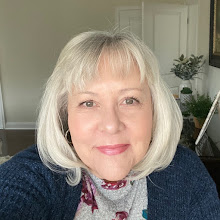In the past few months I've changed up our nook (informal dining area) a bit and added some color. I used to have a blue and white kitchen, and that color scheme flowed into our nook. Lately I've been added more colors to that area of our home, and I wanted to make a crazy rag quilted table runner to reflect some of those colors that have been added.
This is a great way for beginner sewers to quilt. It's easy and fun and you don't even have to worry about binding the edges of the quilt!
Materials:
Choose a variety of 100% cotton fabrics for the front and back of quilt.
Thread
Quilt batting: I used a poly-fil, 80% cotton 20% polyester with a 1/4" loft height. I bought a "crib size" piece and had some left over for future projects. Flannel fabric can also be used as the quilt "batting."
For a 17" x 31" table runner, cut the following lengths.
16 - 2 3/4" x 20 inch strips for front of quilt
16 - 2 3/4" x 20 inch strips for back of quilt
14 - 1 1/2" x 20 inch strips of quilt batting
2 - 2" x 20 inch strips of quilt batting to be used at both ends
The easiest way to make the strips of fabric is with a rotary cutter. If you purchase one, I guarantee you'll use it all the time!
Directions:
Use 3/8" seams.
Take one "back" strip of fabric and lay it wrong side up. Center a strip of quilt batting over it, like this...
Then take a "front" strip of fabric and place it right side up on top. You should have the batting sandwiched between the two strips (front and back -- wrong sides together) of fabric...
To quilt a row, sew down the center of the fabrics with a straight stitch or a decorative stitch...
Create another row for your quilt the same way. Then sew the rows -- back sides of quilt together -- with a 3/8" seam allowance. For the first and last rows use the 2" wide batting. Place the edge with the batting on the outside edge of the quilt.
Here's what the front of my quilt looked like as I began to sew the rows together...
The back of my quilt looked like this...
Clip the seam allowance 1/4" every 3/8-ish inch, like this...
Don't worry if the sides of the quilt match up perfectly, you will trim the sides when you are finished sewing the rows together.
Continue quilting the strips, sewing the rows together and clipping the seams.
When you have all 16 rows sewn together, trim the side seams using a rotary cutter so that your quilt measures about 18" wide. (The quilt will shrink in width and length a little when it is washed.)
After you have trimmed the sides, stitch around the outside edge of your table runner using a 3/8" seam. I opened the seams of each row as I went around. Clip the outside edge 1/4" every 3/8" just like the other seams.
To get those wonderful soft-ruffled seams, you need to toss the runner into the washing machine on a gentle cycle and dry it in your dryer. I put a couple of clean towels into the dryer with the runner to help ruffle the edges.
Here's the back of the finished runner...
And here's how it looks on our table. Kind of crazy, but I love it...
This same technique of quilting can be used with a Jelly Roll to form a beautiful quilt or table runner. Jelly Rolls are collections of 2 1/2" x 44" already-cut strips of fabric. They typically include 40 strips but can vary.After you have trimmed the sides, stitch around the outside edge of your table runner using a 3/8" seam. I opened the seams of each row as I went around. Clip the outside edge 1/4" every 3/8" just like the other seams.
To get those wonderful soft-ruffled seams, you need to toss the runner into the washing machine on a gentle cycle and dry it in your dryer. I put a couple of clean towels into the dryer with the runner to help ruffle the edges.
Here's the back of the finished runner...
And here's how it looks on our table. Kind of crazy, but I love it...
Enjoy!














































































